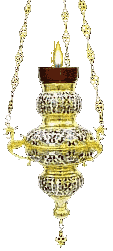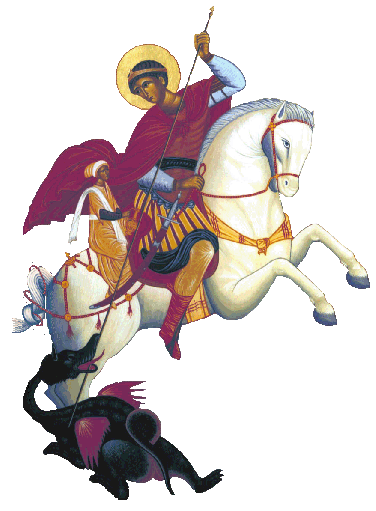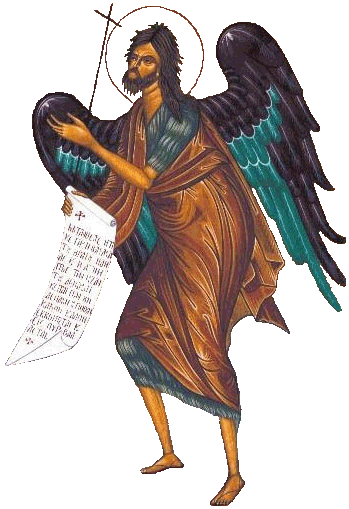|
The Orthodox Pages
THE HISTORY OF SYLIKOU AND HER CHURCHES |
|
♦ ♦ ♦ Home for St. George ♦ ♦ ♦ Our Church ♦ ♦ ♦ Icon Gallery ♦ ♦ ♦ Administration ♦ ♦ ♦
♦ ♦ ♦
Photo Gallery
♦ ♦ ♦
Program for Church Services
♦ ♦
♦
THE HISTORY OF SYLIKOU AND HER CHURCHES ♦ ♦ ♦ ♦ ♦ ♦ ♦ ♦ ♦ ♦ ♦ By Father Christopher Klitou The picturesque Village of Sylikou is situated approximately 28 kilometres North-west of Limassol at an altitude of 650 meters above sea level. Although the area is semi - mountainous, there are enough plains and relatively level areas with fertile land and many vineyards which traditionally were irrigated by three natural springs. Of old, Sylikou was known for her Commandaria (a very sweet dessert wine), other wines and Zivania (a very strong aperitif), and for her excellent raisins. Sylikou also produced olives and almonds. The origins of the name Sylikou is not clear, there are many local accounts to its origin, but the most probable is that it is of Latin origin and that it derived from the name Selicia. The beautiful countryside, the fertile ground of the village and the water of the region had always attracted the foreign lords that occupied Cyprus. Richard de Lion of England conquered Cyprus in 1191 and sold it to the ex-King of Jerusalem Guy de Lusignan. When the Turks conquered Cyprus in 1571, the last of the Lusignan families resorted to Sylikou and there mixed with the local population and played an important role in the development of the Village. In 1581, another Guy Lusignon from France visited his relatives in Sylikou and on returning to his own country wrote a historical account of the troubles bestowed on the villagers by the new conquerors.
The Ottoman occupation of Cyprus in 1571 brought new foreign rulers to Sylikou and although the present villagers claim that they lived in peace and harmony with their Turkish neighbours up to when they left after the Turkish invasion of 1974, the history of Sylikou certainly writes a different story. At some time during the early 19th century the Turks destroyed all the chapels and the main church of the village. The present Church of St. George was rebuilt around 1850 and consecrated in 1874. The story of how it was rebuilt was narrated to me by my grandfather of blessed memory, but also from many of the older men still alive today who were told the story by their fathers. When the villagers tried rebuilding the Church, they would build by day, but the Turks would tear down their labour by night. This went on for some time until they decided to take their troubles to the Sultan. He gave them permission to build the Church and guaranteed them that the building would go unhindered on the condition they finished it within a period of one month. To be able to finish the work in time, they decided to build a smaller church, and thus accomplished building the church within the time allocated to them. The foundations of the original size could still be seen up to 2003, but recent paving of the courtyard has now hidden all the traces of their historical calamity.
Another testimony of Turkish ferocity is the story associated with the Chapel of St. John the Baptist situated in the centre of the village. The Chapel was originally the Church of a small monastic community belonging to the nearby Monastery of Panagia Amasgou (The Mother of God of Amasgou) in the neighbouring Village of Monagri. This is historically verified by a Church codex. Tradition mentions that during the Ottoman occupation, two monks from the main monastery of Amasgou resided at the monastery in Sylikou. We do not know their names, but probably around the time when the Turks destroyed all the churches of Sylikou, the two monks were beheaded. [It is possible that the date of their martyrdom was between the 9th and 14th of July 1821, when in reprisal of the uprising of the Greek Revolution, the Turks arrested and hanged the Archbishop of Cyprus Cyprian and beheaded the Metropolitans of Paphos Chrysostom, of Citium Meletius and Kerynia Laurence, the Abbots of Monasteries and many others. Between the 9th-14th July 1821, hundreds of Clerics and laypeople were martyred by the Turks.] This remained just a story that was handed down to the villagers until recent years when excavation began to lay the new foundations for rebuilding the Church. From the ruins of the old Church, one could see the outer wall, which came up just over a metre high, and an inner wall separating the narthex from the nave. Inside one could see traces of frescoes, which would suggest that the Church had been decorated with frescoes as so many other Churches in the surrounding area. The whole area within the Church was filled with the rubble from the destroyed Church, and whilst clearing out the stones and rubble from the narthex of the church we found the skeletons of two human remains. The position of the skeletons confirmed the story and the monks' martyrdoms. It should be noted that the Orthodox do not bury their dead inside churches. Also Orthodox bury their dead face upwards with the feet towards the east. The bodies found in the chapel were not actually buried, but were left on the floor of the Narthex face down as if kneeling and the feet facing west, but surprisingly the heads were not immediately found with the bodies. On clearing out more of the rubble further down the narthex, we discovered the heads proving that the heads were severed from the bodies before being buried by the rubble. I reburied their remains in a temporary grave in the Village Cemetery and hope to establish a suitable grave for their return on the Chapel grounds. Work on rebuilding the Chapel of St. John began in 1993, but economical reasons prolonged its completion until 2000. The Liturgy is served there on every feast of St. John. The historical ties with the Monastery of Amasgou have also been re-established. The Monastery is now served by nuns, and in recognition that the chapel was once an annex monastery to theirs, the nuns come to the chapel on every feast day of St. John the Baptist and honour us with their beautiful voices singing Vespers, Mattins and the Divine Liturgy. Being an Icon Painter as well as a Priest, I took on the task of painting all the Icons for the Iconostasis. The Iconostasis consist of the usual lower row of Icons and a top row for Feast Icons. On the top row, one would usually find the Icons from the Christological cycle, but I chose to replace these with Icons of the feasts of St. John and Icons which are historically connected with him like the Baptism of Christ.
|


 Archimadrite Cyprian, writing on the history
of Cyprus in 1780, mentions Sylikou as being ecclesiastical property in
the 13th and 14th centuries. In all probability the
Latin (Catholic) church owned Sylikou under a feudal system, where it held
the land in return for services. Many place names in Sylikou have Frankish
names e.g. the irrigated areas of Syrka (Syria) where can be seen the
foundations of a large medieval church with mosaics, the neighbouring land
known as Francisco, the mountainous region of Elitsi, the houses of Regina
and others. The ecclesiastical character of Sylikouís medieval feud is
also confirmed by other sources where it mentions that in 1400 Sylikou was
an important ecclesiastical property. Indirect testimony are
also the many chapels that
existed in the village and surrounding countryside. Tradition
tells us that Sylikou had, apart from the main Church of St. George,
another fourteen chapels. Today five of these chapels have been
rebuilt, the Chapel
Archimadrite Cyprian, writing on the history
of Cyprus in 1780, mentions Sylikou as being ecclesiastical property in
the 13th and 14th centuries. In all probability the
Latin (Catholic) church owned Sylikou under a feudal system, where it held
the land in return for services. Many place names in Sylikou have Frankish
names e.g. the irrigated areas of Syrka (Syria) where can be seen the
foundations of a large medieval church with mosaics, the neighbouring land
known as Francisco, the mountainous region of Elitsi, the houses of Regina
and others. The ecclesiastical character of Sylikouís medieval feud is
also confirmed by other sources where it mentions that in 1400 Sylikou was
an important ecclesiastical property. Indirect testimony are
also the many chapels that
existed in the village and surrounding countryside. Tradition
tells us that Sylikou had, apart from the main Church of St. George,
another fourteen chapels. Today five of these chapels have been
rebuilt, the Chapel